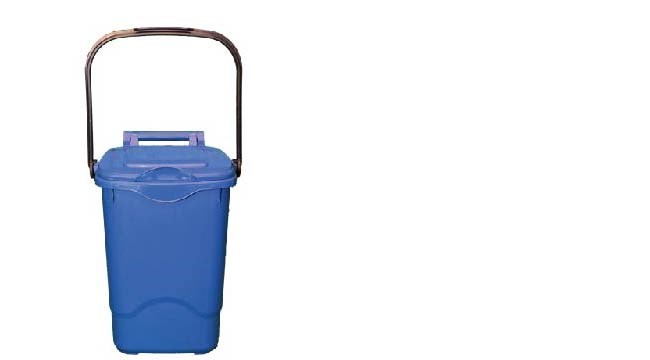Food waste container

Your food waste container is emptied weekly on your collection day.
How to recycle your food waste:
- line your kitchen caddy with a plastic bag and put your food waste in it.
- when full, tie the plastic bag and put it in your food waste container.
- on collection day, move the handle to the upright or fully forward position to lock it.
What you can put in your food waste container:
- leftover food and plate scrapings
- baked goods such as bread, cakes and pastries
- dairy products, eggs and eggshells
- fruit and vegetables, including raw and cooked vegetables and peelings
- out-of-date or mouldy food
- pet food
- raw and cooked meat or fish, including bones
- tea bags and coffee grounds
- cut flowers
What not to put in:
- plastic film
- cardboard
- newspaper
- cat or dog faeces
- large amounts of kitchen roll and tissue
- liquid waste - pour down the drain
- compostable packaging - please see below, compost at home or use your black wheeled bin
How to keep your caddy clean:
You can line your caddy with any of the following:
- bags that food has come in, (bread bags, salad bags, cereal bags, large crisp bags)
- carrier bags (not ‘bags for life’)
- thin plastic bags, (fridge and freezer storage bags that are not longer fit for use)
- pedal bin liners (although reusing an existing bag is best)
- compostable bags
- a sheet of newspaper
All bags are removed at the Anaerobic Digestor before the food is processed, so there is no need to use a compostable bag.
If you choose not to line your caddy, please clean it regularly. Our crews do not scrape out or clean containers. If your food waste does not come out of your container when tipped, it will be left behind.
How to stop pests and maggots:
- line your food waste container and keep the lid closed to reduce the smell
- keep out of direct sunlight
- empty regularly
How your food waste is recycled:
Your food waste is taken to our bulking station in Newton Abbot. From there it is taken to an anaerobic digestion facility in Devon. It is then processed and turned into electricity and a fertiliser that is used on local farms. Any bags you have used to line your caddy are removed and sent to an energy from waste facility.
The problem with compostable packaging:
Compostable packaging is not suitable for the anaerobic digestion process. Most compostable packaging needs to be industrially composted. Check with the manufacturer if it can be composted at home. If not, put in your black bin. We recommend using reusable items wherever possible to reduce your waste.
